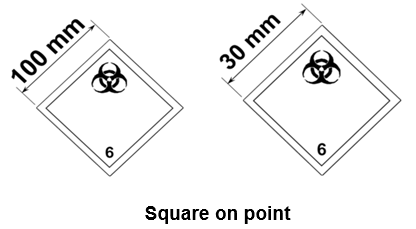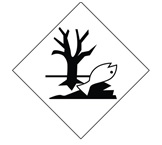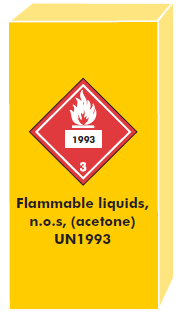From Transport Canada
This document is an overview of the requirements for using safety marks, which identify dangerous goods. It is for anyone who handles, offers for transport or transports dangerous goods in small means of containment (MOC). The following information does not replace the text in Part 4 of the TDG Regulations.
On this page
- General safety marks requirements
- Labels
- UN numbers
- Marks
- Dangerous goods safety marks that can be displayed on a small MOC
- Related links
General safety marks requirements
Section 4.1
Dangerous goods safety marks must be displayed on a small means of containment in accordance with Part 4 of the Transportation of Dangerous Goods (TDG) Regulations. The dangerous goods (DG) safety marks can either be those illustrated in the appendix to Part 4 of the TDG Regulations, or those illustrated in Chapter 5.2 or 5.3 of the UN Recommendations.
Section 1.4
As per the definition in Section 1.4 of the TDG Regulations, a dangerous goods safety mark means a label, placard, orange panel, sign, mark, letter, word, number or abbreviation that is used to identify dangerous goods and to show the nature of the danger posed by them.
Section 4.6
Dangerous goods safety marks must be:
- visible
- legible
- displayed against a background of contrasting colour
- made of durable and weather-resistant material and
- displayed in the colours specified in Section 4.6 of the TDG Regulations
Labels
Section 4.7 & Subsection 4.10(4)
- Labels, except for Class 7, Radioactive Materials, can be reduced to 30 mm on each side
- Reduced labels can be displayed on a tag attached to the MOC
Left image. A white square on point. Starting from the bottom, the number 6. Symbol of three crescents superimposed on a circle in top portion with the size (100 mm) displayed in the upper left corner of the label.
Right image. A white square on point. Starting from the bottom, the number 6. Symbol of three crescents superimposed on a circle in top portion with the size (30 mm) displayed in the upper left corner of the label.
UN numbers
Section 4.8
Black drum depicting a red square on point label for Class 3, Flammable Liquids. Starting from the bottom, the number 3. The symbol of a flame in white in the top portion. Below the red square on point label is the writing UN 1203 inside a white rectangle in the centre.
Next to the primary class label
Black drum depicting a red square on point label for Class 3, Flammable Liquids. Starting from the bottom, the number 3. The symbol of a flame in white in the top portion. Inside the red square on point label for Class 3, Flammable Liquids is the writing 1203 inside a white rectangle.
Within a white rectangle on the primary class label (without the prefix "UN")
Marks
Sections 4.22 & 4.22.1
Category B mark
Category B mark must be displayed on small MOC containing infectious substances included in UN3373, BIOLOGICAL SUBSTANCE, CATEGORY B
Marine pollutant mark
Marine pollutant mark must be displayed on small MOC for DG that are marine pollutants in transport by vessel.
Dangerous goods safety marks that can be displayed on a small MOC
A yellow 3D box displaying a red square on point label for Class 3, Flammable Liquids. Starting from the bottom, the number 3. The symbol of a flame in white in the top portion. Below the red square on point is the writing Flammable liquids, n.o.s, (acetone) UN1993.
- Labels for primary & subsidiary classes
- Shipping name
- Technical name (if DG is subject to Special Provision (SP) 16)
- UN number
- Name or symbol of radionuclide, activity and transport index (if DG is a Class 7, Radioactive Materials) and
- The words "inhalation hazard" or "dangereux par inhalation" (if DG are included in Class 6.1, Toxic Substances, in accordance with Paragraph 2.28(c) of the TDG Regulations, Class 2.3, Toxic Gases, in accordance with Paragraph 2.14(c) of the TDG Regulations or are subject to SP 23)





